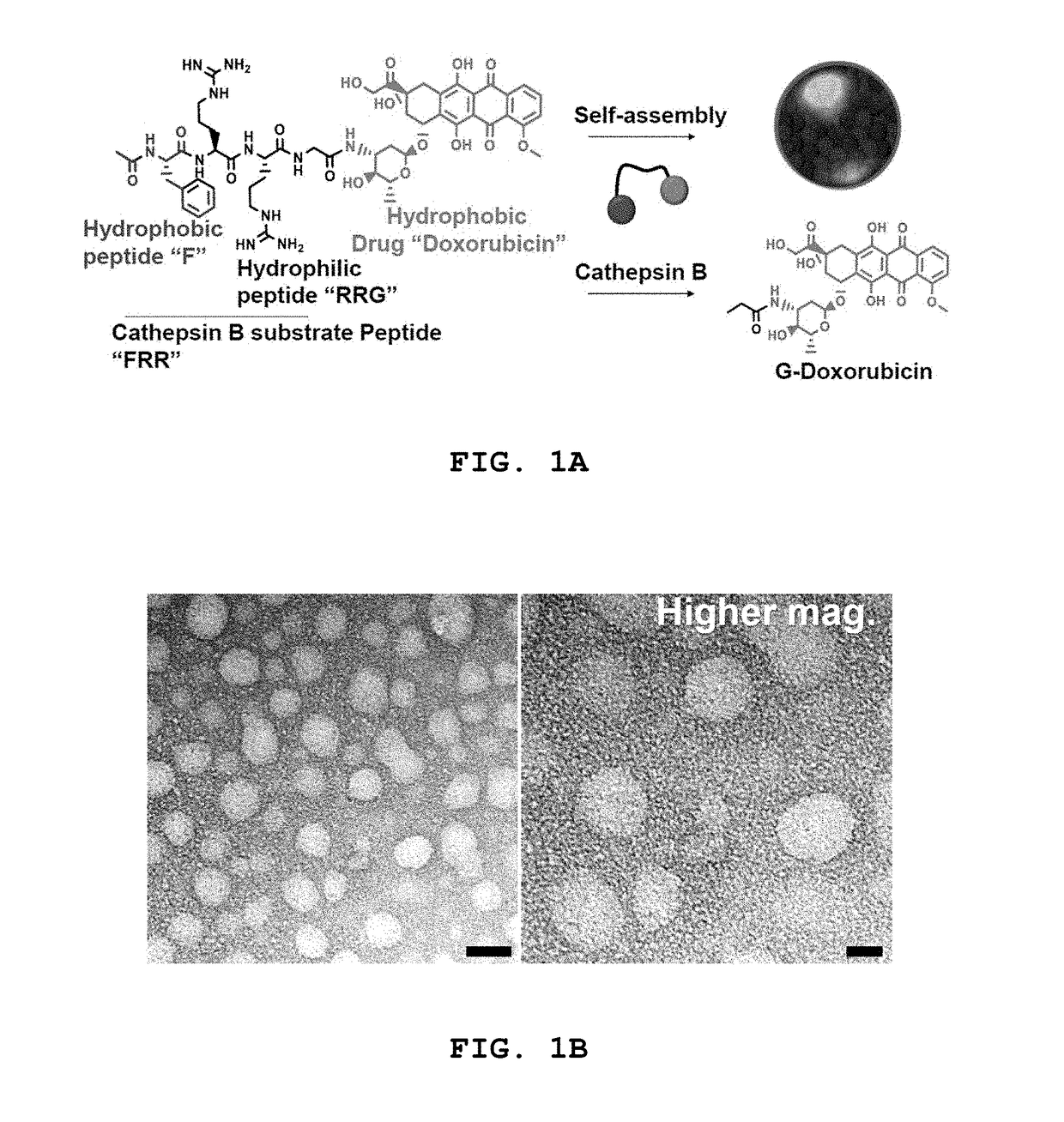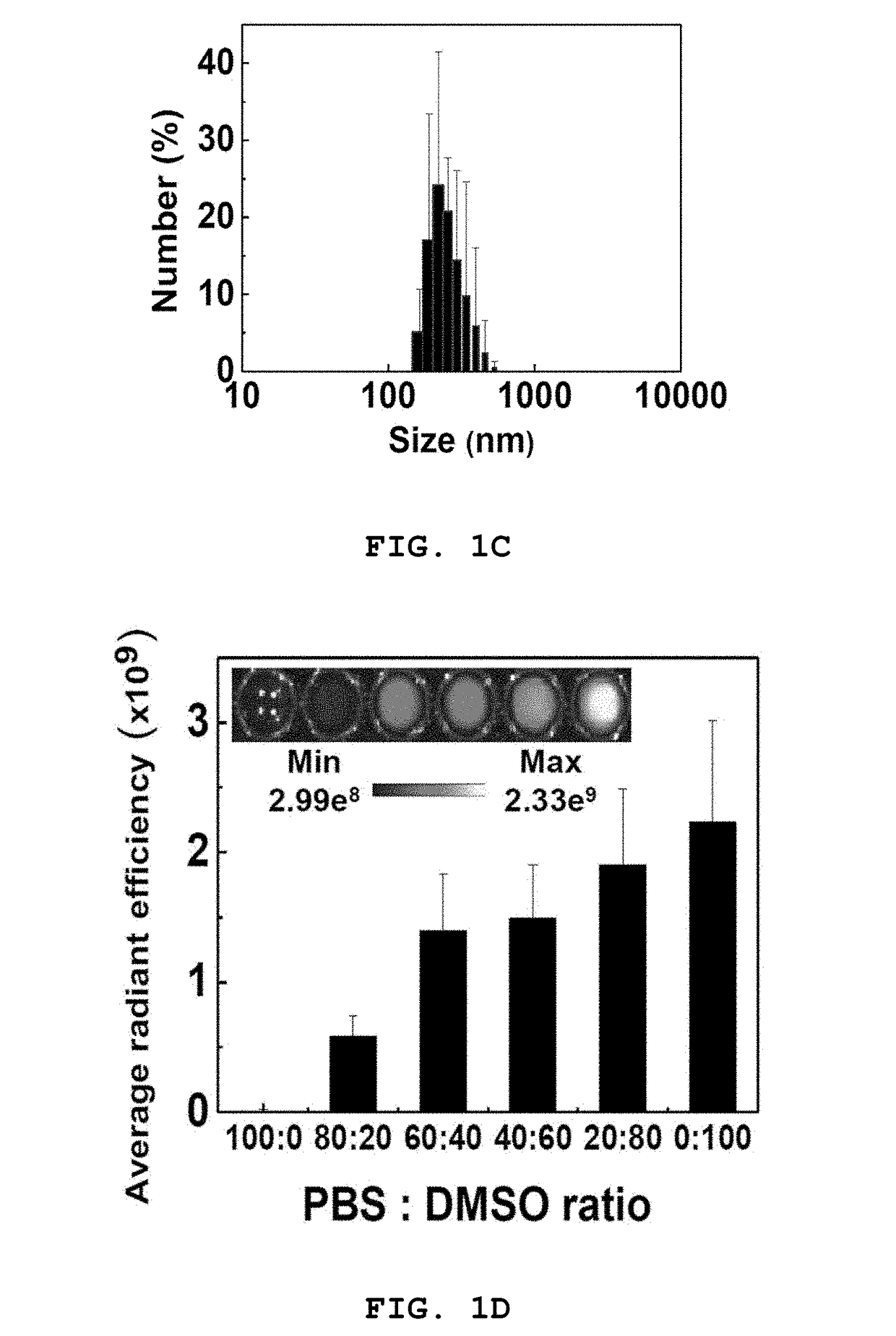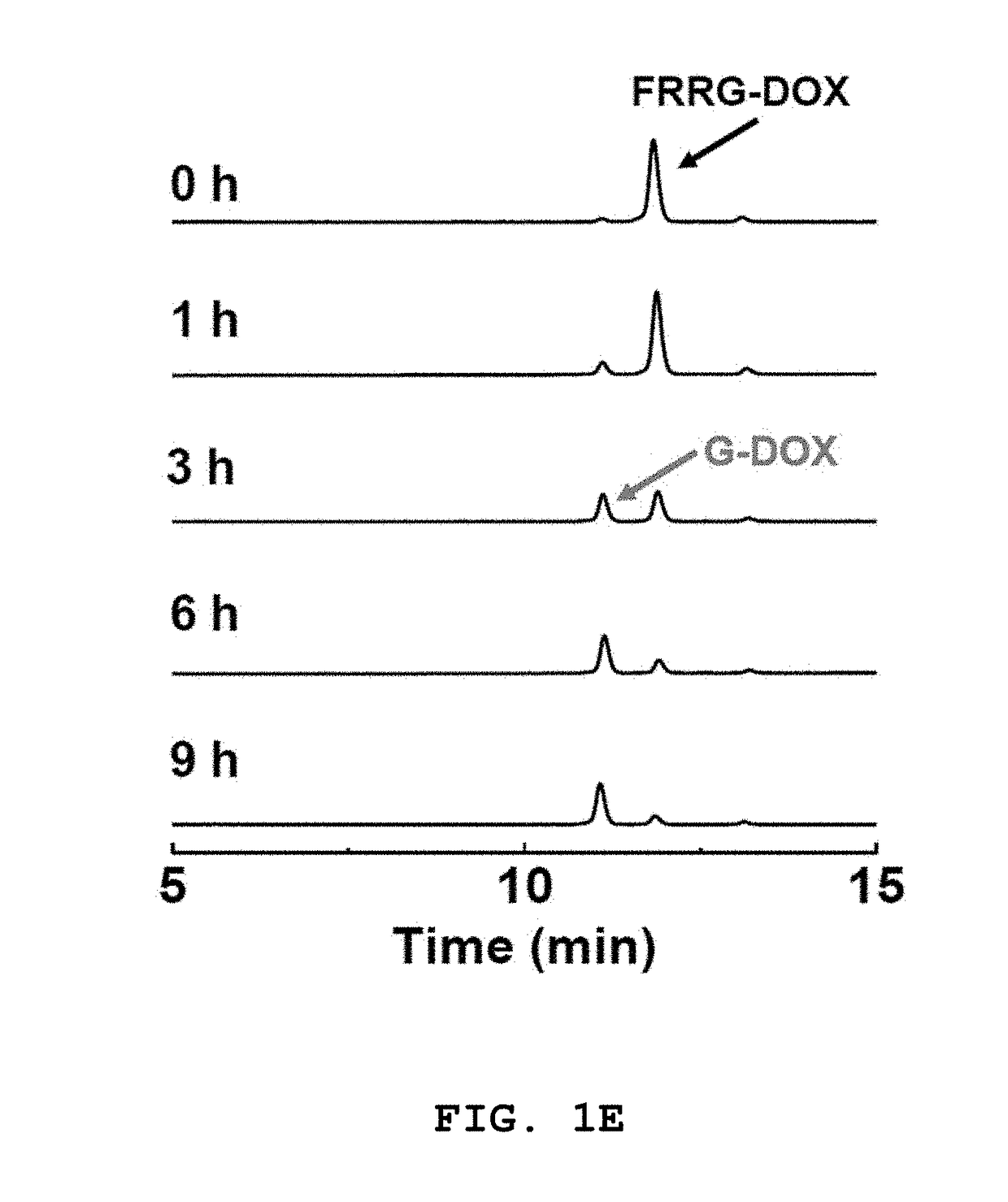Tumor cell-specific responsive self-assembling drug nanoconjugate
a self-assembling, tumor cell technology, applied in the direction of capsule delivery, drug composition, microcapsule, etc., can solve the problems of toxicity to tumor cells as well as normal cells, difficult design of peptides, and still arise problems such as side effects, so as to achieve specific prophylactic or therapeutic effect on tumor cells, and eliminate side effects
- Summary
- Abstract
- Description
- Claims
- Application Information
AI Technical Summary
Benefits of technology
Problems solved by technology
Method used
Image
Examples
examples 1-4
Drug Conjugates FRRG-DOX, GGGGFRRG-DOX, GGFRRGGG-DOX, and FRRGGGGG-DOX
[0128]Trt-Cl Resin and all Fmoc amino acids were purchased from GL Biochem (Shanghai, China). Coupling reagents and cleavage cocktail reagents were purchased from Sigma Aldrich, and other solvents were purchased Daejung Chemical (Korea).
[0129]FRRG (SEQ ID NO: 1), GGGGFRRG (SEQ ID NO: 2), GGFRRGGG (SEQ ID NO: 3), FRRGGGGG (SEQ ID NO: 4), and RRG (SEQ ID NO: 5) were synthesized by Fmoc solid phase peptide synthesis (SPPS) using ASP48S (Peptron, Inc., Korea).
[0130]The peptides were purified by reverse-phase HPLC (Shimadzu prominence HPLC, Japan) using a Vydac Everest C18 column (250 mm×22 mm, 10 μm, USA). Elution was performed with a water-acetonitrile linear gradient (10-75% (v / v) of acetonitrile) containing 0.1% (v / v) trifluoroacetic acid. The molecular weights of the purified peptides were confirmed by LC / MS (Shimadzu LC / MS-2020 series, Japan). The purified peptides were lyophilized using FDT12012 (Operon, Korea)....
example 5
mbled Nanoparticles of the Drug Conjugates
[0141]The drug conjugates FRRG-DOX, GGGGFRRG-DOX, GGFRRGGG-DOX, and FRRGGGGG-DOX synthesized in Examples 1-4 are conjugates in which the hydrophobic drug is conjugated to the amphiphilic peptide consisting of hydrophobic amino acids and hydrophilic amino acids and specifically degraded by cathepsin B. The drug conjugates spontaneously form spherical nanoparticles in solvents. Specifically, the spherical nanoparticles are formed by the drug conjugate molecules connected to each other. The spherical nanoparticles have a structure in which the hydrophobic moieties of the drug conjugate form a core and the hydrophilic moieties of the drug conjugate are exposed to the outside of the core.
[0142]The drug conjugate of Example 1, which was confirmed to be most effective among the drug conjugates of Examples 1-4, was dissolved in various solvents to characterize the self-assembled nanoparticles thereof.
[0143]FIG. 1B shows TEM images of nanoparticles f...
experimental example 1
pecificity of FRRG-DOX Prepared in Example 1 for Cathepsin B
[0150]In this example, the specificity of FRRG-DOX prepared in Example 1 for cleavage by cathepsin B was investigated. First, cathepsin B (10 μg / ml) was dissolved in 25 mM 2-(N-morpholine)-ethanesulphonic acid (MES) buffer. The drug conjugate FRRG-DOX (100 μM) of Example 1 was added to the cathepsin B solution. The divided portions of the mixture were incubated at 37° C. for 0, 1, 3, 6, and 9 h. The drug conjugate of Example 1 having reacted with cathepsin B was analyzed by reverse-phase HPLC (Agilent Technologies 1200 series, Agilent Technologies, USA) using a C18 analytical column (10:90 H2O:acetonitrile to 60:40 H2O:acetonitrile) for 20 min at 210 nm.
[0151]The drug conjugate of Example 1 was allowed to react with other enzymes (10 μg / ml cathepsins D, E, and L) and PBS buffer only (in this case, a non-enzymatic hydrolysis product was obtained) and the reaction products were analyzed by HPLC at 37° C. for 9 h.
[0152]FIG. 1E...
PUM
| Property | Measurement | Unit |
|---|---|---|
| molecular weight | aaaaa | aaaaa |
| diameter | aaaaa | aaaaa |
| molecular weight | aaaaa | aaaaa |
Abstract
Description
Claims
Application Information
 Login to View More
Login to View More - R&D
- Intellectual Property
- Life Sciences
- Materials
- Tech Scout
- Unparalleled Data Quality
- Higher Quality Content
- 60% Fewer Hallucinations
Browse by: Latest US Patents, China's latest patents, Technical Efficacy Thesaurus, Application Domain, Technology Topic, Popular Technical Reports.
© 2025 PatSnap. All rights reserved.Legal|Privacy policy|Modern Slavery Act Transparency Statement|Sitemap|About US| Contact US: help@patsnap.com



